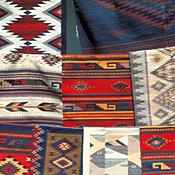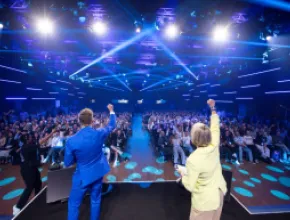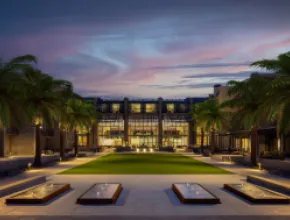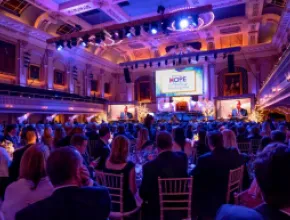From legendary names such as Frida Kahlo to folksy traditions like mariachi, Mexico weaves an intriguing cultural fabric that serves as a strong foundation for the country.
“Culture in Mexico is everywhere,” says Eduardo Chaillo, regional director of the Mexico Tourism Board for the U.S. and Canada.
Oaxaca, Chaillo notes, features the annual Guelaguetza festival, in honor of Centeotl, the goddess of corn, while Morelia hosts its own film festival.
Meanwhile, Mexico City brims with performing arts, history and art museums showcasing everything from Diego Rivera to contemporary works.
The Sierra Gorda Biosphere Reserve in the state of Queretaro lays claim to five Franciscan missions declared World Heritage Sites by UNESCO. Mexico recently added two new World Heritage Sites to its repertoire, bringing the total to 29. One addition is the 16th century town of San Miguel de Allende, known for its Mexican baroque architecture and cobblestone streets.
Other important cultural examples are ancient archaeological zones such as Teotihuacan in the state of Mexico; Monte Alban in Oaxaca; El Tajin in Veracruz; and Uxmal and Chichen- Itza in the Yucatan Peninsula.
Groups are increasingly looking for ways to explore Mexico’s cultural side.
“Before they were looking for the beach, but people have changed, says Judith Villasenor, operations manager and co-owner of Procesa, a DMC based in Guadalajara. “Groups that have already been to the beach want to do a combination and get involved in real Mexico culture, so they look to the interior.”
Procesa offers a variety of group programs that combine multiple days at an interior location before heading to the beach. Guadalajara and Puerto Vallarta are often paired in one program, in addition to Mexico City and Acapulco or Veracruz.
Mexico City
With nearly 170 museums, countless festivals and a rich diversity of music and theater, Mexico City sits at the vortex of all things cultural. Highlights include the Spanish Colonial-era Metropolitan Cathedral, the National Palace and the Aztec ruins of Templo Mayor in the four-square-mile historic center, ancient capital of the Aztecs.
“When groups arrive and they finish their work at the end of their day, we are sure Mexico City is one of the best places for discovering art, culture, history, and gastronomy,” says Carlos Mackinlay, advisor for the Mexico City Tourism Ministry. “Mexico City is the most important city in Mexico and one of the cultural capitals of the continent. We’re working a lot to improve the quality of the services and improve tourist infrastructure. We have a historical downtown center and we are making efforts to rediscover it.”
Improvements are being made in two of main areas: Zona Rosa and Plaza de Garibaldi, headquarters of the city’s mariachis. Another project is a new tram crossing the historical downtown center. The projects are slated for completion in two years.
“In 2010, we are celebrating the bicentennial of our independence and we are trying to have a better, more modern city,” Mackinlay says.
Two recent additions to the vast collection of museums in Mexico City are the Estanquillo Museum and the Museum of Popular Art, featuring local artists. The Estanquillo Museum showcases the collection of Carlos Monsivais, who over the span of more than 40 years amassed about 10,000 pieces of art and photography, ranging in themes from the Mexican Revolution to Mexican professional wrestling.
The city is also home to the Palace of Fine Arts, which debuted in 1934. The architecturally significant building stages a variety of performing arts events, including Mexico’s renowned Ballet Folklorico, and it showcases impressive murals by famous Mexican artists. The Palace of Fine Arts accommodates group events.
“In Mexico City, we have at least 25 colonial places able to receive different groups from 50 to 1,000 people,” Mackinlay says. “For meetings and conventions, we can hold special events in old buildings from the 17th or 18th centuries. For example, the Castle of Chapultepec, where Maximilian I of Mexico and Empress Carlota of Mexico once lived, now houses the National History Museum, which is open to groups.”
The National Mexican Art Museum devotes one room to plastic arts of Mexico from the 1930s to the 1960s. Other rooms feature revolving exhibits of contemporary painters, sculptors, lithographers, and photographers from around the world.
Meanwhile, the Aztec Hall at the world-renowned National Museum of Anthropology spans some 100,000 square feet.
Guadalajara
Some of the most classic cultural symbols of Mexico hail from Guadalajara, including tequila and mariachi music. Guadalajara’s historic center also recalls old-time Mexico with its series of plazas and horse-drawn carriages. The city is also internationally known for cultural festivals such as Oktoberfest, the International Mariachi Festival and the second-largest book fair in the world.
One of the best spots for mariachi performances is at Tlaquepaque village, where groups can arrange to have dinner or shop for traditional arts and crafts.
Built around 200 years ago, Guadalajara’s Cabanas Cultural Institute, formerly an orphanage, features art exhibits and weekly ballet performances. Various theatrical events also take place within the Degollado Theatre, open to groups.
Guadalajara’s repertoire is expanding. New projects include the Guggenheim Museum Guadalajara, which will be the sixth Guggenheim museum in the world. Following initial delays, the 24-story tower, designed by architect Enrique Norten, is now scheduled for completion in 2011. Also in the works is a JVC Center—a complex of buildings for cultural activities—and the University Cultural Center, a complex of the University of Guadalajara.
Other museums include Guadalajara Planetarium and Science Centre, and groups can also entertain among the sculptures at the Sergio Bustamante Gallery.
Groups can also rent cars on the Tequila Express train, replete with live mariachis, to get a taste of the region’s rich tequila heritage. The train programs include tours and tastings at a distillery in the town of Tequila.
Another option outside the city is a hacienda tour, one of which visits the 18th century Hacienda El Carmen.
North of Jalisco, Procesa offers groups a unique encounter with the Huicholes native culture. Huicholes artisans and musicians, in addition to a shaman, gather with groups to share their traditions.
Casa Colomos, located on the northwest edge of Guadalajara, was built in 1898 and inaugurated in 1902 to function as the Water Administration House, but today it serves as a culture house with classes in painting, drawing, sculpture, and folkloric dancing. It also stages films and theater performances.
Monterrey
Known for its industrial design and business acumen, Monterrey is also filled with attractions such as impressive museums, and the city is improving upon its cultural appeal.
“In Monterrey we are working on trying to have a business city and a cultural city,” says Julio Valdes, director of the Monterrey CVB. “We have a lot of people that come for business, and we are trying to offer a cultural aspect. I think we are doing well. If someone needs to come to Monterrey for business, they are starting to add an extension to their trips.”
Last year, the city hosted the Universal Forum of Cultures.
“The events gave us the opportunity to consolidate our cultural effort,” Valdes says.
Monterrey is now home to more than 20 museums, including the Museum of Steel, focusing on the city’s industrial history. Groups can host cocktail receptions and other events at the museum.
The Museum of Contemporary Art is also a major attraction in the city, featuring post-modern Mexican architecture, as are the Museum of Mexican History and the new Museum of the Northeast (MUNE), showcasing the history of Northern Mexico and Texas.
Meanwhile, there are also some 45 cultural events at any one time around the city, and Monterrey is producing a new cultural guide for visitors and meeting attendees.
Many of the city’s museums and attractions are in the vicinity of the Paseo Santa Lucia river walk, an artificial river completed last year that joins the city’s downtown with Fundidora Park, where the Cintermex convention center is located.
“I think last year the main development, the river walk, changed the face of the city,” Valdes says.
The two-mile river is surrounded by walkways, bridges and fountains.
Puebla
Also named a UNESCO World Heritage Site, Puebla’s historic downtown features more than 2,600 buildings constructed from the 16th century to the 19th century with French and Spanish influences, and Puebla also boasts one of the highest concentrations of museums in Mexico.
Among its signature architectural features are the neoclassical Puebla Cathedral and the gold-covered Capilla del Rosario in the Santo Domingo Church.
There are some 30 museums in downtown Puebla close to the city’s convention center, including several that are housed in historic buildings such as former convents. The lineup includes Santa Monica Museum of Religious Art and the Amparo Museum of Mexican Art, which spans from Puebla’s ancient history to modern times. The museum can host up to 200 people for events.
In addition to its vast history and cultural museums, the region is known for its culinary offerings.
“For us, a major attraction is the fact that Puebla is considered the gastronomic capital of Mexico,” says Gustavo Mora, manager of the Puebla CVB, adding that the region’s cuisine is dubbed Cocina Poblana.
“There isn’t a Mexican restaurant anywhere in world where you can’t find a dish born or discovered in Puebla,” Mora says.
Food makes its way into many of Puebla’s festivals, including the Mole Poblano festival in May and June, and the Chiles and Nogada festival in July and August, celebrating the typical dish eaten in Puebla during those months.
Chihuahua/Copper Canyon
Known mostly for its natural attractions, Chihuahua also features an active arts scene with a number of museums open to groups, including the Historical Museum of the Revolution, Quinta Gameros Museum and the Contemporary Art Museum. The city of Chihuahua also has numerous architectural attractions, such as its cathedral, built of pink quarry stone.
Most attendees take a side trip to the region’s most notable attraction, the Copper Canyon, four times the size of the Grand Canyon. The 95-mile train trip on the Chihuahua al Pacifico Railroad is a scenic way to appreciate the region, and stops in remote villages along the way give passengers a chance to explore the cultural riches of the native Tarahumara, who still live much as they did centuries ago and produce unique arts and crafts that are available for purchase.
Another excursion is to the Paquime ruins, one of the most important archaeological sites in Northern Mexico.
Colonial Cities
For a true taste of Mexican culture, the country’s myriad colonial cities offer an intriguing peek into the past.
San Miguel de Allende’s status as a UNESCO World Heritage Site makes this colonial gem even more appealing. Just a few options include exploring the Baroque architecture of its cathedral and colonial mansions, learning how to make a traditional meal at a cooking school, and soaking up the murals and paintings by local artists from the Instituto Allende. At night, San Miguel’s Jardin, the central plaza, is a magnet for dining, socializing and people-watching.
Groups can also rent the historic theater La Peralta for off-site events.
Another off-site venue option is the National Allende Museum, which is slated to reopen in February following a renovation.
The colonial city of Morelia, another UNESCO World Heritage Site, has a historic downtown filled with more than 1,000 colonial buildings and churches. One of the city’s top attractions is its ornate Baroque cathedral.
Guanajuato was founded in 1554 and played a pivotal role in the Mexican War of Independence, and it is also the birthplace of artist Diego Rivera. The city is another architectural standout, with hundreds of colonial buildings and inviting squares that provide the backdrop for events such as the annual International Cervantino Festival. Highlighting a variety of artistic mediums, including painting, photography, film-making, theater, dance, and performance art, the festival draws visitors from around the world and is one of the city’s most popular cultural events.
Oaxaca is famous for its annual Day of the Dead celebrations, and the city brims with museums and historic buildings. Groups can host dinners in one of the destination’s main tourist draws, the Santo Domingo Temple. Also open to groups are the Government Palace and Macedonio Alcala Theater.
Outside the city are numerous villages known for signature regional arts and crafts such as black pottery and alebrijes, which are whimsical, colorfully painted wooden animals. Groups can take tours spotlighting the various villages and arrange to visit artists’ studios.
Zacatecas, a former silver mining town, still celebrates its past with an annual silver festival. The city’s inviting cobblestone streets and historic churches are major attractions, including its imposing Baroque cathedral, featuring a pink sandstone facade with thousands of hand-carved figures.
At the cultural heart of the Yucatan, Merida is home to countless museums dedicated to anthropology, archaeology, antiques, and popular art. Among the city’s many other attractions is the Paseo de Montejo, an elegant avenue featuring historic structures such as Canton Palace, an Italian Renaissance building that is now the Museum of Anthropology and History.
Merida is also an ideal base for exploring cultural attractions in the surrounding region, including one of Mexico’s star archaeological sites: the Mayan ruins of Chichen-Itza, which was recently declared one of the new Seven Wonders of the World.
For More Info
Chihuahua CVB 011.52.614.429.3320 www.chihuahua.gob.mx
Guadalajara CVB 011.52.333.122.7544 www.guadalajaramidestino.com
Guanajuato State Tourism Office (Guanajuato and San Miguel de Allende) 011.52.473.732.7622 www.guanajuato-travel.com
Mexico City Tourism Ministry 011.52.555.211.2136 www.mexicocity.gob.mx
Mexico Tourism Board 202.265.9020 www.visitmexico.com
Monterrey CVB 011.52.812.020.6721 www.ocvmty.com.mx
Michoacan State Tourism Office (Morelia) 011.52.443.312.7289 www.michoacan.gob.mx
Oaxaca State Tourism Office 011.52.951.502.1200 www.aoaxaca.com
Puebla CVB 011.52.222.242.2546 www.puebla.gob.mx
Yucatan Convention Bureau 011.52.999.942.1900 www.mayayucatan.com.mx
Zacatecas State Tourism Office 011.52.492.922.6751 www.turismozacatecas.gob.mx







